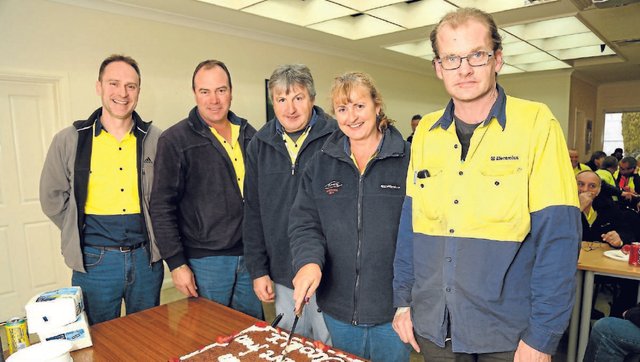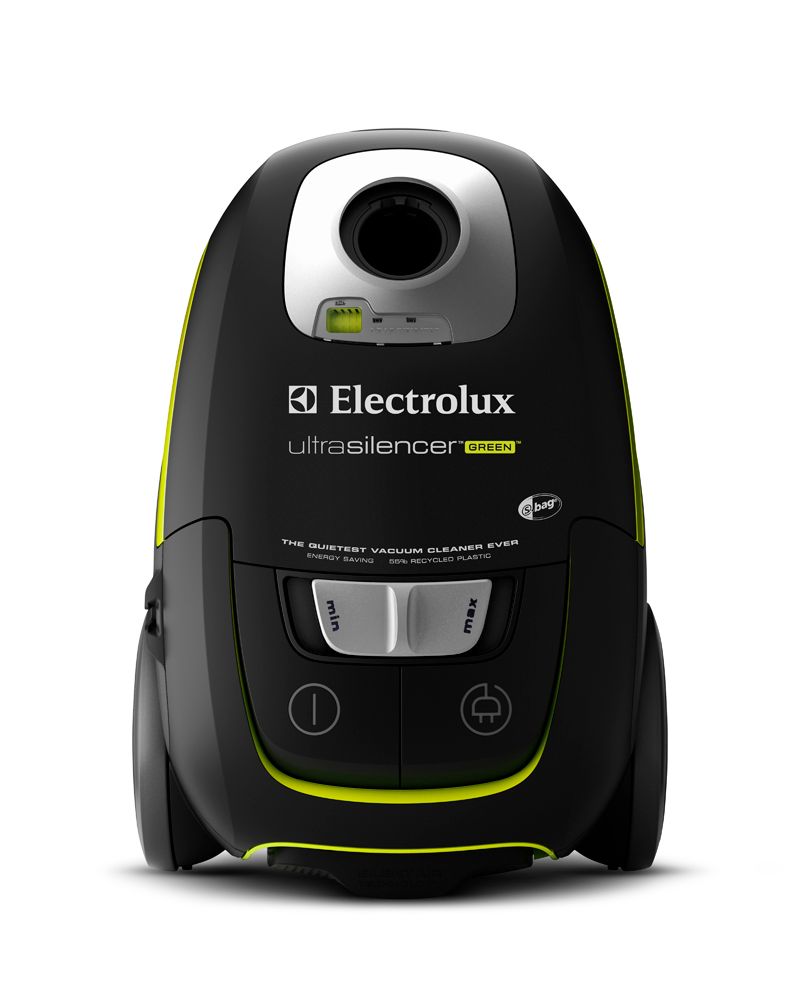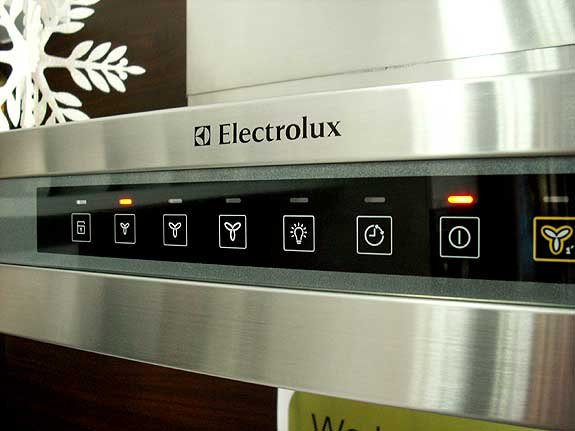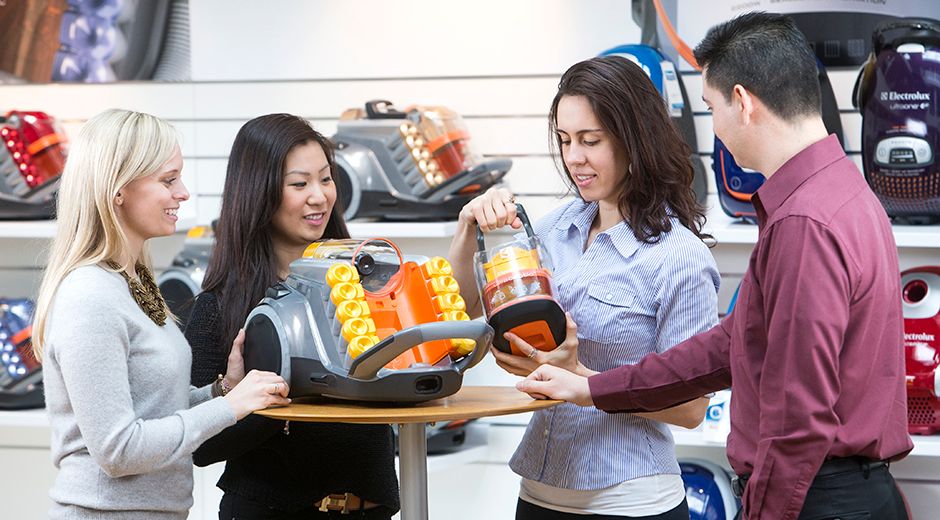Written by Robyn of Eggs
It was Michael Porter who arrived at four basic business strategies.
Electrolux, of course, dominates with its cost leadership approach, the first of the four. It does so by being the most efficient in its industry for production (Wheelen et al., 2015). One of its methods of doing this is to “lower product development and product costs by using standardized global modular platforms for new products” (Electrolux, n.d.). Because it is a leader in its industry, Electrolux can offer a variety of products, in addition to its most cost efficient. And by using these economies of scale, it can continuously seek to cut costs through increased efficiency in each model.

In fact, it won the RobecoSAM Sustainability Award Industry Leader 2016
for the fifth year in a row; the winner is measured by their performance in economic, environmental, and social areas of operation (Electrolux, n.d.). Porter’s second business strategy, given by the previous example, is differentiation. Electrolux differentiates itself through its sustainability efforts, holding true to its vision of being the best in the eyes of its consumers. And third, is focus. There is both a cost leadership focus and a differentiation focus which Porter refers to (Wheelen et al., 2015). In the case of Electrolux, it does best at holding a differentiation focus through the use of its human resources.
This differentiation focus of human resources is the power
behind what actually implements its sustainability efforts. Without amazing, top-notch employees, who have both creativity and a wide range of knowledge, Electrolux may not be what it is today. If it had just decided to extract the largest share of the market through the exploitation of its most precious resources, without thought to sustainability, it might not exist today. And that’s what would have happened if it had taken solely a cost leadership focus, thereby excluding its true advantage. After all, its employees are the ones who keep the consumer’s best interests at heart. Its corporate culture reflects the importance and value of its employees as well as the innovation they wield.

Corporate culture is defined as giving a company a sense of identity
(Wheelen et al., 2015). As it is revealed here, “Employee passion for innovation, consumer insight and motivation to achieve results set Electrolux apart,” means its corporate culture revolves around this consumer insight (Electrolux, n.d.). Innovation and employees. Employees and innovation. With these two forces, corporate culture attacks consumer insight with revelations. Placing value on this insight maintains Electrolux’s original foundation of values, which began with Axel Wenner-Gren. It is the original competitive advantage which still holds true today, that consumer insight leads the way, and it is the employees that initiate it through innovation. If its culture shows anything about it, it’s that Electrolux has stayed true to its original identity.

So how has this identity survived in a globally fragmented market?
It begins by first consolidating in dominant regions (where its shares of the market compete only with a few at the top). As new markets emerge, Electrolux develops a presence. And as this presence grows globally, it continues to become more consolidated in the industry. The only way to guarantee global consolidation, though, is to make sustainable business decisions over the next ten to fifteen years (Ernst & Young, 2013). In anticipation, Electrolux is making acquisitions of smaller companies in these emerging markets, which means operating in a fragmented industry, on a global scale (Wheelen et al., 2015).
In order to compete in fragmented regions,
it uses its differentiation focus strategy to stand out from the crowd. Its human resources shine in innovative techniques to meet the consumers needs as closely as possible. Additionally, Electrolux thoroughly tests all of its products before releasing them into the marketplace (Electrolux, n.d.). In regions where it remains consolidated, however, Electrolux competes using its cost leadership strategy, harnessing all of its awesome resources to provide the most efficient products possible. This consumer value, depending on what is valued where, equates to Electrolux’s competitive advantage, as discussed more thoroughly below.

Using Barney’s VRIO analysis (value, rareness, imitability, and organization),
Electrolux is defined as having a “distinctive competence” in the value category (Wheelen et al., 2015). This is because its vision directly states it wants to be the best in the eyes of its consumers, and because its corporate culture has successfully seeded that idea into its employees. It has become best at being the best to its consumers. It has not, however, mastered rareness or imitability. In fact, “about half of [U.S.] imports come from China” (Household, 2015). Chinese home appliance exports reached about $52.3 billion in 2015 (ChinaRealNews, 2016). Perhaps there is no share of the Chinese market to be had, not on their own ground anyway.
But that does not mean Electrolux cannot compete
in the emerging markets like India or South Africa. It’s true that south Africa is leaning on sustainable answers to their appliance needs, due to their extreme lack of resources in the area (Sonnenberg, Erasmus, & Schreuder, 2014). Which sounds like just the right fit for Electrolux, which specializes in offering sustainable consumer solutions. And in India, there is predicted to be 200 million people in the middle class by 2020 (Ernst & Young, 2013). Which brings up the fourth category of Barney’s analysis, organization.

Electrolux has strength in its organization,
which is broken down to adjust for local strategies. It is poised to maximize profits, through its operating excellence and human resources. “As a global company Electrolux is present in more than 60 countries and sells in more than 150 markets with 55,000 employees around the world” (Electrolux, n.d.). Without its diverse organization, Electrolux would not be on top today. By focusing on what it does best, Electrolux secures its competitive advantage through this value and organization. It differentiates itself through its incredible use of employee and innovation power, and it leads the way, with a large market share in home appliance, allowing it to compete on a global scale.
References:
ChinaRealNews: China's exports of electrical home appliances show slight growth to US$ in 2015 (2016). Chatham: Newstex. Retrieved from http://search.proquest.com/docview/1770165292?accountid=8289
Electrolux Group (n.d.) People and leadership. Retrieved from http://www.electroluxgroup.com/en/people-and-leadership-19243/
Ernst & Young (2013) Hitting the sweet spot. Retrieved from http://www.ey.com/GL/en/Issues/Driving-growth/Middle-class-growth-in-emerging-markets
Household appliance manufacturing - quarterly update 11/2/2015. (2015) Austin: Hoover's Inc. Retrieved from http://search.proquest.com/docview/1729120157?accountid=8289
Sonnenberg, N. C., Erasmus, A. C., & Schreuder, A. (2014). Consumers' preferences for eco-friendly appliances in an emerging market context. International Journal of Consumer Studies, 38(5), 559-569. [Abstract] doi:10.1111/ijcs.12120
Wheelen, T. & Hunger, J. (2015) Concepts in strategic management and business policy: globalization, innovation, and sustainability. Boston: Pearson. [eBook]
*This block is the sole property of Robyn Eggs. The photos are credited. Not for reproduction or republication. Please re-steem and share with your friends and neighbors on social media. Copyright 2017.
Follow @robyneggs for more business writing!

